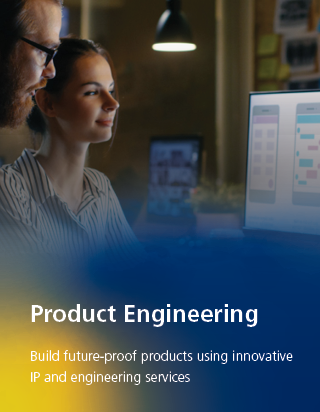Guarantee Job Success with Comprehensive Engineering Support: Setting Out Engineer Services, Topographical Surveying, and Much more
Guarantee Job Success with Comprehensive Engineering Support: Setting Out Engineer Services, Topographical Surveying, and Much more
Blog Article
Making The Most Of Source Allotment Through Strategic Checking Practices
In the world of strategic resource allowance, the practice of evaluating stands as a crucial device for organizations aiming to enhance their performance and impact. By systematically accumulating understandings and information, strategic surveying practices use a roadmap for informed decision-making and resource distribution. With the lens of stakeholder involvement, these studies give a way to touch right into the varied viewpoints and requires that form an organization's landscape. However, real power of calculated checking exists not simply in information collection, yet in the capacity to change this details right into workable approaches that move an organization towards its goals. Via this lens, we start to unwind the detailed interaction in between surveying methods and resource optimization, setting the phase for a deeper exploration of the methods and tactics that underpin this vital process.
Value of Strategic Checking Practices
Strategic checking techniques play a vital role in establishing the reliable allocation of resources within organizations. By performing calculated surveys, firms can gather beneficial data and understandings that help in making educated decisions pertaining to the allocation of resources such as workforce, time, and budget. These techniques provide an organized strategy to comprehending the existing state of the organization, identifying areas for renovation, and aligning sources with tactical objectives.
One crucial significance of critical surveying practices is that they help companies prioritize their campaigns based on real-time comments from stakeholders. This makes sure that resources are guided in the direction of projects or activities that have the greatest influence on accomplishing organizational goals. In addition, critical surveys allow firms to adapt to changing market conditions, client preferences, and interior capacities by continuously keeping an eye on and reviewing resource allocation techniques.
Celebration Insights From Stakeholders
Including responses from stakeholders is vital for companies applying calculated checking methods to successfully designate resources and drive decision-making procedures. Stakeholders, including employees, clients, providers, and community participants, hold valuable insights that can significantly affect the success of strategic campaigns. setting out engineer services. Engaging with stakeholders with surveys, meetings, focus teams, and comments sessions enables organizations to obtain a deeper understanding of their needs, choices, and issues
By collecting insights from stakeholders, companies can identify essential areas for renovation, prioritize resource appropriation based on real demands, and align calculated goals with stakeholder expectations. Involving stakeholders in the decision-making process fosters a feeling of possession and commitment, leading to raised buy-in and assistance for critical campaigns.
Additionally, stakeholders usually use one-of-a-kind perspectives and cutting-edge concepts that might not have been thought about inside. By proactively listening to and integrating stakeholder responses, companies can enhance their strategic surveying methods, make even more enlightened decisions, and inevitably attain much better results.
Utilizing Data-Driven Approaches
Using data-driven strategies is paramount for organizations seeking to enhance the effectiveness of their resource allotment methods and decision-making procedures. By leveraging information analytics and progressed technologies, organizations can extract valuable insights to optimize resource allowance, recognize fads, and make educated choices. Data-driven techniques allow companies to allot sources based upon empirical evidence as opposed to instinct, leading to more reliable and effective results.

Additionally, organizations can employ anticipating analytics to anticipate future resource demands and allocate sources proactively. Topographical Surveying. By leveraging historical data and fad evaluation, companies can expect demand fluctuations and readjust their resource allocation techniques accordingly. Generally, accepting data-driven approaches encourages companies to make educated decisions that optimize resource appropriation effectiveness and drive lasting development
Identifying Locations for Improvement
Recognizing areas for enhancement is an essential action in the procedure of Your Domain Name maximizing resource allowance. By identifying where inefficiencies or traffic jams exist within the organization, decision-makers can guide sources in the direction of resolving these specific locations.
One efficient approach for recognizing locations for improvement is performing normal performance assessments across different departments or functions. With these assessments, organizations can collect beneficial insights into locations that require attention or restructuring. Additionally, seeking feedback from employees whatsoever levels of the organization can offer a distinct point of view on prospective areas for improvement.
Moreover, making use of devices such as process mapping, SWOT analysis, and benchmarking can aid in determining locations for enhancement by highlighting staminas, weaknesses, possibilities, and hazards within the company. By methodically taking a look at these aspects, organizations can develop a comprehensive understanding of where sources ought to be allocated to drive efficiency and effectiveness.
Practical Tips for Execution

Conclusion
Finally, tactical surveying practices play a crucial role in optimizing source allowance by collecting understandings from stakeholders, using data-driven techniques, and determining areas for improvement. Implementing practical tips for effective surveying can lead to even more enlightened decision-making and enhanced resource allocation approaches. By focusing on tactical surveying techniques, companies can make sure that resources are allocated effectively and effectively to fulfill their purposes and goals.
In the world of critical resource allocation, the technique of checking stands as an essential device for companies intending to optimize their performance and effect.Strategic surveying techniques play an essential role in establishing the effective allocation of sources within organizations.Including comments from stakeholders is important for companies executing critical checking techniques to properly assign sources and drive decision-making processes.In addition, organizations can use predictive analytics to anticipate future resource demands and assign sources proactively. By prioritizing calculated evaluating practices, organizations can make sure that resources are alloted efficiently and successfully to fulfill their goals and goals.
Report this page